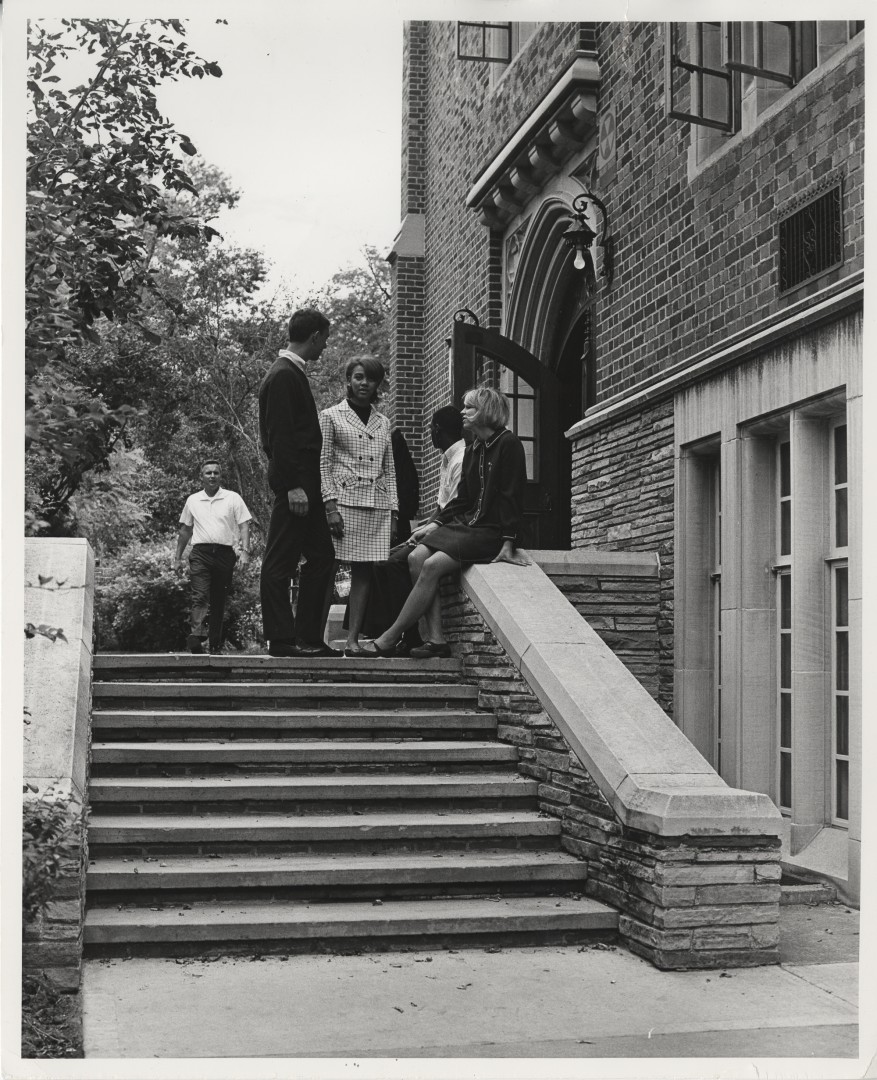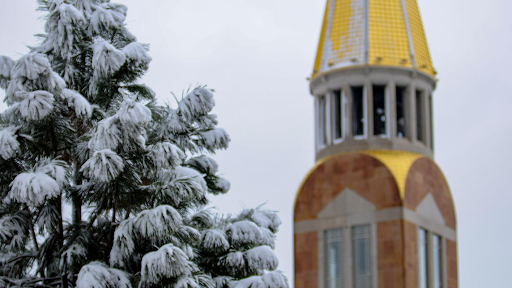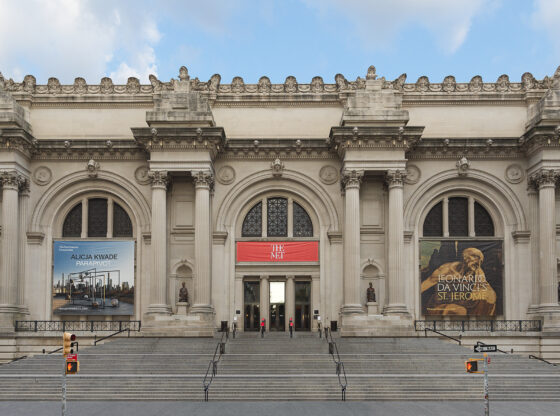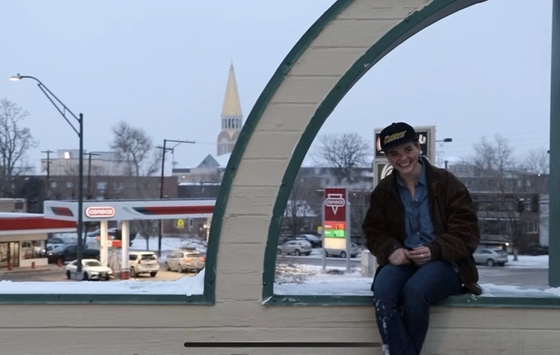Click here to view our timeline of headlines from the Clarion’s century-spanning history.
Extra, Extra! A DU tradition older than Winter Carnival or Denver Boone is turning 120 today – and it’s probably not what you think. Founded in the 1890s, the DU Clarion newspaper is issuing its 120th volume this year.
“America’s premier college newspaper,” as a 1930s flag reads, originally began print in 1898 as the Bulletin, becoming the Clarion in 1899, according to a history compiled by former Clarion editors, although clerical errors through the years have made it difficult to tell for certain, said Steve Fisher, University Historian. The Clarion became so popular that by 1902 it replaced DU’s original newspaper, the Hesperus. Both papers sold for $ 0.05.
At that time, the university had just recently moved to the University park area from 13th and Arapahoe, where the Denver Center of Performing Arts parking garage is now located.
“Everything – administrative offices, classrooms, [and] church services – were housed in University Hall,” said Fisher. Along with University Hall, erected in 1890, the campus included Evans Chapel, Chamberlin Observatory and Iliff School of Theology.
The move to the park originally came from DU’s Methodist background, according to Fischer.
“There was a fear that Denver was becoming very urban – we were in a sort-of red light district with a lot of saloons – and DU’s early Methodist founders were opposed to alcohol, “ said Fisher. “They wanted a park where the evils of the city wouldn’t encroach on them, so Rufus Clark, a local potato farmer, gave them some land.”
Although times may have changed since then, the publication of the Clarion has remained steady, even through World Wars, the Great Depression and Vietnam War Protests.
“The content or organization [of the Clarion] did not change much from what it is now. There has always been a lot of interest in athletics, social organizations, such as Greek life, administration changes such as the announcement of new chancellors coming and going and information on visiting speakers, “ said Fisher.
Although Fisher said there has never been a DU newspaper that directly attempted to compete with the Clarion’s type of editorial content, the business and law school have published their own publications through the years and Clarion editors have compiled lists of alternate publications such as the comedic Weekly Peanut, Parakeet and Spit Valve, the op-ed based Student Free Press and University Free press, and features magazines such as the Weekend, Free and Free Magazine and the Sweetwater Journal, and creative literary journals such as the Oracle and Space.
David Von Drehle, 1981-82 Clarion editor and current editor-at-large for TIME Magazine, recalled his time at the Clarion.
“On the day before publication, we set the stories in type and budgeted the advertising. I designed the ad layouts and many of the pages,” said Von Drehle. “By the time we proofed and locked the pages it was often long past midnight, at which point I would deliver the papers to our printing company, which was off West 6th Avenue near the Valley Highway. I often got to sleep as the sun was rising.”
Von Drehle was editor during the first term of President Ronald Reagan, during which time he tried to cover problems such as recession, Cold War tension and financial problems at the University, while also focusing on issues “closer to home.”
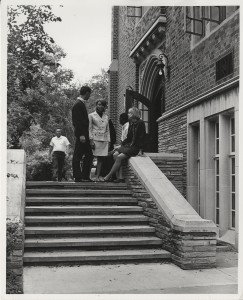
Photo courtesy of DU Special Collections.
Von Drehle returned to DU for the Presidential Debate, noticing changes such as techonology and accommodations.
“The place was a dump when I was a student there, starting with the house where we published the Clarion. It had almost no heat and it reeked of leaking gas. I’m amazed we didn’t blow ourselves up. But human nature never changes,” said Von Drehle. “Today’s students would laugh at our clothes and haircuts, but they would recognize our pastimes and concerns.”
However, Von Drehle did notice some improvements.
“DU is a much more beautiful and a much more ambitious place, with greater aspirations, than it was 30 years ago,” said Von Drehle.
Citing a recent exhibit in the Ritchie Center about Presidential Visits to DU as an example, Fisher noted that many times, the Clarion is the first place he can find information about DU history.
“There are sometimes errors, of course – you have to verify things – but it’s really a valuable resource to the University,” said Fisher.
In honor of the 150th anniversary of DU, Katie Crowe, archives curator, is currently working on a project to scan old issues of the Clarion into a text-searchable electronic archive.
“We started looking at it initially because about a year ago, in 2010, we realized that the university’s 150th anniversary was coming up quickly and we had this great digital repository that we could make available,” said Crowe. “We wanted to make DU’s history and the archives a bigger part of that.”
The archive, which can be found at www.digitaldu.coalliance.org, currently only contains a few samples, due to special equipment needed to capture the old images.
“We’ve done a lot of test issues to make sure we can get the old text to scan and get a good OCR [Optical Character Recognition],” said Crowe. “We really wanted to make sure that we could make it as full-text readable as possible.”
Additionally, with many of the archives being off-site and limited access to the large specialty scanner, progress has slowed.
“We are really hoping that the oversize scanner comes with us to the new building [Penrose Academic Commons], because we need to monopolize it. Things will really speed up when we [Special Collections] get into the new building in March and April,” said Crowe.
Other focuses of the scanning project include historic photos, video and audio and the Kynewisbok (DU yearbook).
“When we started this, Steve [Fisher] and I thought, What are the riches sources of DU history? If you really want to get a snapshot of student life, administration, what’s going on in Denver, what sources would you go to?,” said Crowe.
“The Clarion has been around for almost as long as the university, and it’s unique in that a lot of the archives are focused on administration and faculty and are from the perspective of the people running the university, but the Clarion is from the perspective of the students – and a university is nothing without its students.”

